Hummingbirds: Meaning, Unique Traits, and Ecological Role
Explore hummingbirds' unique traits, behaviors, and crucial role in ecosystems.
Hummingbirds: Unique Characteristics
Hummingbirds, the dazzling jewels of the avian world, have fascinated humans for centuries with their vibrant colors and extraordinary abilities. These tiny birds, often no larger than a thumb, display a remarkable range of physical and behavioral adaptations that allow them to thrive in a variety of environments. From their unique wing structures that enable incredible flight maneuvers to their intricate role in pollination, hummingbirds are not just a spectacle for the eyes; they are vital components of our ecosystems. As we embark on a detailed exploration of these remarkable creatures, we will uncover the many facets that make hummingbirds truly unique, from their physical attributes to their habitat preferences and conservation needs.
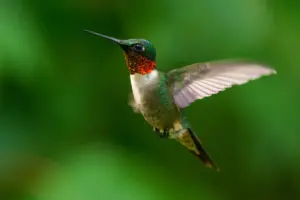
Each species of hummingbird tells a story of adaptation and survival, perfectly tailored to their environment. With over 360 species distributed primarily across the Americas, the diversity of hummingbirds showcases nature’s incredible creativity. Along our journey, we will delve into various aspects of these birds, including their physical features, habitat preferences, feeding behaviors, and cultural significance. Through this exploration, we aim to deepen our appreciation for hummingbirds, enabling us to recognize the critical roles they play within our ecosystems and the urgent need for their conservation.
Physical Features of Hummingbirds
Hummingbirds are an astonishing example of nature’s artistry, combining vivid colors with small size in a way that captivates our attention. They wear their beauty proudly, showcasing a spectrum of colors ranging from electric greens to vibrant reds and purples. Yet this coloration is not merely for our enjoyment; it serves a greater purpose in their survival and reproduction.
Size and Color Variations
Hummingbirds are among the smallest birds in the world. Although they can vary significantly in size, most species measure between 2 to 5 inches (approximately 5 to 13 centimeters). For instance, the Bee Hummingbird, the smallest of them all, reaches a mere 2 inches (5 cm), while larger species like the Blue-Throated Hummingbird can grow up to 5 inches (13 cm). Their weight is equally diminutive, typically ranging from 2 to 4 grams for most species.
One striking aspect of hummingbirds is the vibrant colors that adorn their feathers, which serve various functions. Male hummingbirds are generally brighter than females, a phenomenon known as sexual dimorphism. This is primarily due to the need for males to attract mates; a male with a more intense coloration signifies vigor and genetic health. Female hummingbirds, on the other hand, usually sport more muted tones, providing them with better camouflage, especially during nesting.
The iridescent colors of hummingbirds result from both pigmentation and structural coloration, achieved by microscopic structures in their feathers. As light refracts through these layers, it creates stunning displays that change depending on the angle from which they are viewed. This breathtaking visual effect is particularly evident in the throat patches or gorgets of the males, which exhibit colors that range from red and pink to violet and blue, reflecting light in a mesmerizing dance.
Their diet also plays a significant role in shaping their coloration. Carotenoids obtained from nectar contribute to the yellow, orange, and red hues in their plumage. A well-nourished hummingbird maintains vivid colors, while those with limited food availability may display paler tones, emphasizing the strong connection between health and color.
Geographical variations in coloration add another layer of complexity to understanding hummingbirds. For example, species in tropical regions could be more vividly colored than those in temperate climates, as their environment dictates the evolutionary pressures for brighter plumage.
| Species Name | Male Coloration | Female Coloration |
|---|---|---|
| Ruby-Throated Hummingbird | Iridescent ruby-red gorget | Metallic green body |
| Rufous Hummingbird | Striking coppery red | Duller green |
| Broad-Billed Hummingbird | Bright emerald and blue | More subdued with gray underparts |
The multitude of color variations and sizes among hummingbirds reflects an intricate tapestry of evolution, survival, and adaptation to diverse ecological niches.
Wing Structure and Flight Abilities
Hummingbirds possess a miraculous combination of wing structure and flight capabilities that sets them apart from other birds. Their wings are long and narrow, designed for maximum maneuverability. Unlike most birds that flap their wings in a conventional up-and-down motion, hummingbirds can rotate their wings at the shoulder. This unique ability allows them to create a figure-eight pattern during their wing beats, providing lift in both the upstroke and downstroke of their flight.
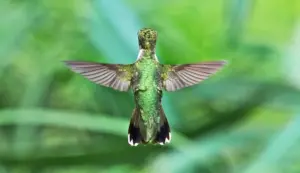
The rigid joints in their wings amplify their control over flight dynamics, making it possible for them to perform rapid accelerations and swift turns responses which are vital when foraging and avoiding predators. The speed with which they can flap their wings is positively remarkable, typically hovering with a wingspan beating at 50 to 80 beats per second, and some species elevating that number to an astonishing 200 beats per second during courtship displays.
In addition to hovering, hummingbirds possess extraordinary speed capabilities. Their powerful pectoral muscles, which make up roughly 30% of their body weight, allow them to generate quick bursts of speed. On average, hummingbirds maintain cruising speeds around 30 mph, yet they can dart up to 60 mph during impressive aerial dives.
| Aspect | Details |
|---|---|
| Wingbeat Rate | 50 to 80 beats per second (hovering) |
| Flying Speed | Average 30 mph, can reach 60 mph in dives |
| Muscle Composition | Pectoral muscles comprise ~30% of body weight |
The intricacies of their wing structure and flight mechanics not only facilitate their feeding habits but also enhance their survival strategies. The ability to maneuver with precision and speed has positioned the hummingbird as a marvel of avian innovation.
Hummingbirds Habitats
Hummingbirds inhabit a wide array of ecosystems, all varying in flora and climate, which cater to their dietary and nesting needs. From tropical rainforests to arid desert regions, these birds thrive in environments rich with blooming flora.
Preferred Ecosystems
Generally, hummingbirds are closely associated with regions that provide abundant flowering plants. They thrive in various ecosystems, which can be categorized as follows:
- Tropical and Subtropical Forests: These areas, abundant in flowering plants, provide year-round food sources.
- Meadows and Gardens: Locations with various flowering shrubs often attract hummingbirds, making them popular spots for viewing these birds.
- Woodland Edges and Backyards: Here, hummingbirds find necessary cover and food that fulfill their nesting and feeding preferences.
- Scrublands and Alpine Habitats: Some species adapt to mountainous regions with available flowering plants, illustrating their versatility in habitat preference.
Hummingbirds are territorial creatures. They often defend their feeding areas, which are critical to their survival, against other birds. Additionally, their choice of habitat greatly influences their health and reproductive success. A healthy ecosystem filled with vibrant flowering plants ensures not only a rich nectar source but also safe nesting options.
Geographic Distribution
The geographic distribution of hummingbirds spans from Alaska to Tierra del Fuego, with North America, Central America, and South America all hosting various species. This widespread distribution can be observed as follows:
- North America: The Ruby-throated Hummingbird is common in the eastern U.S., while Anna’s and Rufous Hummingbirds are prevalent along the West Coast.
- Central America: Countries like Costa Rica and Panama boast a high diversity of hummingbird species, largely due to the abundance of floral species.
- South America: The Andes Mountains are a hotspot for various endemic hummingbird species, each adapted to specific altitudes and climate conditions.
Hummingbirds’ diverse habits and vast geographic reach reflect their flexibility and adaptability, allowing them to exploit plentiful nectar resources in many ecosystems, enhancing their ecological importance.
Hummingbirds Behavior
Exploring the behavior of hummingbirds reveals a complex tapestry of feeding habits, territoriality, and social interactions warranted by their energy demands and ecological roles.
Feeding Habits and Nectar Sources
At first glance, hummingbirds might seem exclusive nectar feeders, but their dietary needs are more intricate. These tiny birds require a balanced diet comprised of nectar and small invertebrates, including insects and spiders, to fulfill their nutritional demands effectively.
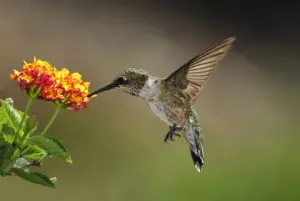
While nectar offers quick energy, essential for their high-intensity activities, insects contribute vital proteins necessary for muscle growth, feather development, and overall health. Observational studies indicate that a significant portion of their feeding time (up to 60%) is devoted to capturing arthropods rather than nectar. Such a diet ensures they are well-nourished and able to maintain their extraordinary energy levels.
When it comes to foraging, hummingbirds have adept methods tailored to their environments. They are drawn to brightly colored flowers, especially red ones, which are typically rich sources of nectar. They feed primarily from tubular-shaped flowers that match their specialized beaks. As they hover, they can extend their long tongues swiftly, extracting nectar with remarkable efficiency.
Additionally, hummingbirds have an extraordinary memory that assists them in locating feeding sites. They can remember the locations of thousands of flowers, allowing them to return to blooms at optimal times for nectar availability. This skill is particularly essential during migration, as finding nourishment is vital to their survival.
| Nectar Source Dynamics | |
|---|---|
| Predominant Sources | Flowering plants rich in nectar |
| Protein Sources | Small insects and spiders |
| Feeding Techniques | Hovering, quick tongue extension |
Thus, hummingbirds have earned their status as specialized foragers within ecosystems, forging symbiotic relationships with plants that enhance both parties’ survival.
Mating Rituals and Nesting Practices
Mating rituals and nesting practices among hummingbirds are fascinating aspects of their behavior, showcasing both their elusiveness and the devotion that females exhibit in raising their young.
Mating Rituals
Mating rituals in hummingbirds primarily hinge on elaborate courtship displays performed by males. These displays often serve the dual purpose of attracting females and deterring competing males. Courtship strategies typically include:
- Courtship Flights: Males engage in aerial acrobatics, exhibiting rapid dives and vocalizations. These thrilling displays may see them soar up to 150 feet in the air, followed by plummeting dives that showcase their strength and agility.
- Selection Process: The female plays a vital role in selecting a mate. During the courtship, she evaluates the male’s performance, focusing on vibrant plumage and flying prowess. If she is impressed, she signals her willingness to mate; otherwise, she may quietly fly away.
- Mating Mechanics: The actual mating process is remarkably swift, typically lasting no more than three to five seconds. With no external penis, mating takes place through cloacal contact, ensuring the transfer of sperm.
Nesting Practices
Following successful courtship, the female takes full responsibility for nesting and rearing the young:
- Nest Construction: She meticulously builds a small nest from materials like twigs, leaves, and spider silk, often choosing a location that offers good camouflage for protection.
- Egg Laying and Incubation: Typically, she lays two eggs, the size of a pea, incubating them alone for approximately 16 to 18 days until they hatch.
- Chick Rearing: Once hatched, the female continues to care for the chicks, feeding them insect-rich diets until they are ready to leave the nest, around 18 to 22 days post-hatching.
These behaviors are not only essential for the propagation of the species but also highlight the various pressures and challenges that hummingbirds face in their life cycle. Collectively, their mating and nesting practices underscore the rich ecological narratives encapsulated within these remarkable birds.
Importance of Hummingbirds in Ecosystems
Hummingbirds hold significant ecological importance through their roles as pollinators and their influence on plant biodiversity. These tiny avians facilitate plant reproduction and ensure the stability of various ecosystems.
Role in Pollination
As hummingbirds move from flower to flower, sipping nectar, they play a crucial role in the pollination process by transferring pollen between plants. Remarkably, about 7,000 plant species rely on hummingbirds for successful fertilization, highlighting their vital contribution to maintaining diverse ecosystems.
Pollination by hummingbirds is particularly important in ecosystems where they are the primary pollinators. Their unique feeding habits, often targeting tubular flowers, facilitate the reproductive success of many flowering plants. Just as seeds feed and sustain the next generation, hummingbirds’ nectar consumption fosters plant growth, creating safe havens for various wildlife species dependent on those plants for survival.
Hummingbird-mediated pollination further impacts genetic diversity. By pollinating varied plant species, hummingbirds enhance the overall health of the plant population, thereby contributing to greater resilience amidst changing environmental conditions.
| Ecosystem Services | |
|---|---|
| Pollination Dependence | 7,000 plant species rely on hummingbirds |
| Genetic Diversity | Assists in promoting plant diversity |
| Food Source | Supports a wide array of wildlife |
Despite their vital role as pollinators, hummingbirds are facing various threats, including habitat loss and climate change, which significantly hinder their populations. Protecting these remarkable birds is crucial for the ecological balance they help nurture.
Impact on Biodiversity
The ecological impact of hummingbirds extends beyond pollination. Their intricate relationships with flowering plants are foundational in sustaining biodiversity. By facilitating fertilization and promoting genetic diversity of plants, hummingbirds help maintain healthy ecosystems filled with diverse flora and fauna.
When hummingbirds visit a flower, they inadvertently collect pollen, which they transport to other plants. This process not only leads to greater seed production but also results in the genetic blending of plant populations. Increased genetic diversity among plants can contribute to better resilience under varying environmental conditions, ultimately enhancing survival rates amidst climate shifts or ecological disruptions.
Declining hummingbird populations, influenced by habitat destruction and climate change, could profoundly disrupt the balance of ecosystems that rely on them. Around 10% of hummingbird species are currently considered globally threatened, representing a potential loss of species crucial for maintaining biodiversity. Consequently, the consequential decline in flowering plants that depend on these birds for pollination poses a direct threat to the broader ecological community.
| Biodiversity Highlights | |
|---|---|
| Plant Diversity | Maintains healthy ecosystems |
| Genetic Blending | Facilitates greater adaptability |
| Species Interdependence | Supports various wildlife communities |
In essence, hummingbirds embody the delicate interdependence present in ecosystems. Their role in pollination and influence on flora diversity enhances the resilience of ecosystems, which ultimately benefits numerous species, including humans.
Conservation of Hummingbirds
The conservation of hummingbirds is increasingly crucial as these stunning creatures face various threats to their populations. Active efforts are necessary to mitigate impacts such as habitat loss, climate change, and pollution, ensuring hummingbirds continue to thrive in their environments.
Threats to Hummingbirds Populations
Hummingbirds confront numerous significant threats in today’s rapidly changing world:
- Climate Change: Rising temperatures and altering weather patterns threaten the natural habitats of hummingbirds. Reports indicate that by 2080, several species might lose considerable parts of their breeding ranges due to climate impacts, leading to challenges in securing suitable food sources and nesting sites.
- Habitat Loss and Fragmentation: Urbanization, deforestation, and agricultural practices are rapidly destroying critical habitats that hummingbirds depend on. Over 80% of hummingbirds require forested areas and native vegetation, making habitat degradation a leading cause of declining populations. Fragmented ecosystems not only limit these birds’ foraging efficiency but also hinder their ability to find safe nesting grounds.
- Invasive Species: Invasive plants and animals can derail native hummingbird populations by altering ecosystems. Invasive predators may threaten direct challenges, while invasive plants can reduce food sources critical for survival.
- Pollution: Pesticides and chemicals contaminate food sources and habitats, leading to adverse effects on both hummingbirds and their insect prey. The degradation of their habitats through pollution further impacts their overall health and survival.
- Predation by Domestic Animals: Domestic cats are known to significantly threaten local hummingbird populations, particularly in suburban areas, where feeders attract these birds and expose them to predation.
- Collisions with Man-Made Structures: Collisions with buildings and windows are common causes of mortality for hummingbirds. Their small size and high-speed flight make them vulnerable, especially during migration.
Conservation Efforts and Success Stories
Addressing the threats to hummingbird populations requires a multifaceted approach based on research-driven conservation strategies:
- Habitat Restoration: Initiatives aim to restore and protect critical habitats, including reforestation projects and preserving native vegetation. Such efforts create safe nesting and foraging opportunities for hummingbirds, crucial for maintaining their populations.
- Research and Monitoring: Continuous studies help understand the ecological needs of hummingbirds, enabling conservationists to develop targeted strategies that cater specifically to at-risk species.
- Community Engagement: Local community involvement is essential to successful conservation. Educational programs raising awareness about hummingbirds encourage planting native gardens rich in nectar to create hummingbird-friendly environments.
- Public Awareness Campaigns: Promoting the ecological importance of hummingbirds assists in garnering public support for their conservation, encouraging people to appreciate and preserve local populations.
- Legislation and Policy Support: Advocating for policies protecting natural habitats and regulating pollution positively impacts biodiversity conservation efforts for hummingbirds and other wildlife.
Noteworthy success stories include the restoration of habitats that have stabilized specific hummingbird populations. Community initiatives emphasizing the importance of native plants have led to healthier feeding grounds. Additionally, successful habitat restoration has resulted in the returning of migratory species and greater sightings of previously declining populations.
| Conservation Strategies | |
|---|---|
| Initiative Type | Habitat restoration, Community engagement |
| Key Area of Focus | Education, Research, Policy support |
| Success Stories | Stabilized populations in conservation areas |
These ongoing efforts highlight the immediate need for dedicated conservation work, which underscores both the beauty and ecological significance of hummingbirds. Taking cognizance of the threats they face and promoting conservation initiatives is essential for maintaining these remarkable birds in our ecosystems.
Interesting Facts About Hummingbirds
Hummingbirds are not only fascinating for their ecological roles but also have a variety of intriguing and surprising traits. Here’s a collection of interesting facts:
Unique Abilities and Adaptations
- Species Diversity: There are over 360 species of hummingbirds, making them one of the largest families of birds in existence. Most species thrive in the diverse tropical habitats of South America.
- Smallest Bird: The Bee Hummingbird of Cuba is recognized as the world’s smallest bird, measuring just 2.25 inches long and weighing around 2 grams. Their petite size enables incredible maneuverability while feeding.
- Exceptional Flight Capabilities: Hummingbirds stand out among birds for their ability to fly backward and even upside down. This incredible flight ability aids them in accessing nectar from various flowers.
- High Metabolism: Due to their active lifestyle, hummingbirds possess one of the highest metabolic rates among birds. Their hearts can beat up to 1,260 times per minute, a necessary adaptation to support their fast-paced existence.
- Remarkable Memory: Their spatial memory is outstanding, allowing them to remember the locations of thousands of feeders and flowers over extended periods. This aptitude plays a vital role in their feeding efficiency.
- Migration: Certain species, like the Ruby-throated Hummingbird, undertake incredible migrations of up to 3,000 miles alone, demonstrating remarkable endurance and incredible navigational skills.
| Fact Category | Detail |
|---|---|
| Species Count | Over 360 species worldwide |
| Smallest Bird | Bee Hummingbird, 2.25 inches long |
| Flight Skills | Ability to fly backward and hover |
| Heart Rate | Up to 1,260 beats per minute |
| Memory | Remembers thousands of flower locations |
| Migration Distance | Up to 3,000 miles |
These captivating facts about hummingbirds blend their ecological importance with elements of wonder. By learning more about their unique talents and contributions, we can foster a greater appreciation for hummingbirds in our natural world.
Cultural Significance and Symbolism
Beyond their ecological roles, hummingbirds hold rich cultural significance and symbolic meaning in various cultures across the globe.
- Symbol of Joy and Happiness: In many cultures, the presence of hummingbirds is seen as a representation of joy and positivity. Their vibrant colors and lively behavior inspire happiness and wonder in those fortunate enough to witness them.
- Resilience: These birds symbolize resilience and endurance. Their innate ability to thrive in diverse environments reflects their adaptability, offering a profound metaphor for overcoming challenges.
- Native American Beliefs: In Native American mythology, hummingbirds often symbolize communication with the spirit world. They are seen as messengers from ancestors, carrying guidance and blessing their presence as positive omens.
- Asian Interpretations: Hummingbirds carry distinct cultural interpretations across Asia. In Japan, they are embodiments of good fortune, while in China, they represent peace, prosperity, and harmony, showcasing their universal appeal.
- Christian Symbolism: Within Christianity, the image of a hummingbird is frequently linked to divine connections and the Holy Spirit. Their elegant flight signifies strength and love qualities that resonate within spiritual contexts.
| Cultural Aspect | Meaning |
|---|---|
| Symbol of Joy | Represents happiness and positivity |
| Resilience | Symbolizes endurance in adversity |
| Native Beliefs | Messenger from the spirit world |
| Asian Interpretations | Symbolizes good fortune and peace |
| Christian Significance | Linked to divine messages and love |
These symbolic meanings reveal how creatures as small as hummingbirds can carry profound cultural weight, reminding us of nature’s interconnectedness and the significance of all living beings within our world. By fostering awareness and appreciation, we further recognize the importance of conserving these remarkable birds for future generations.
In conclusion, hummingbirds captivate us with their incredible adaptability, vivid beauty, and crucial roles in our ecosystems. They remind us of the intricate relationships within nature, where each species contributes to the greater ecological tapestry. Collectively, the unique features and behaviors of hummingbirds encourage appreciation of biodiversity, while their ecological significance calls for concerted conservation efforts to safeguard their future in a rapidly changing world.

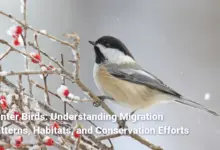
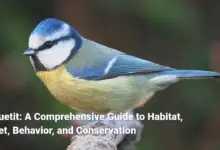

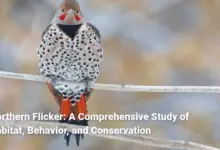
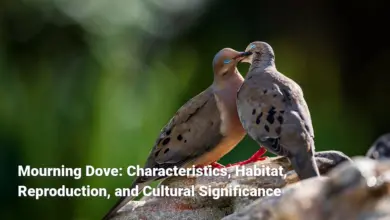
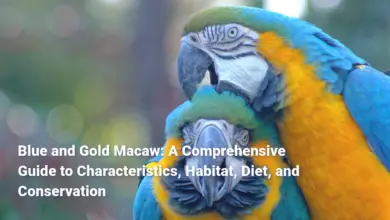


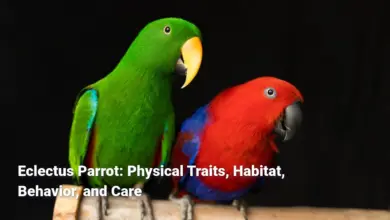
One Comment